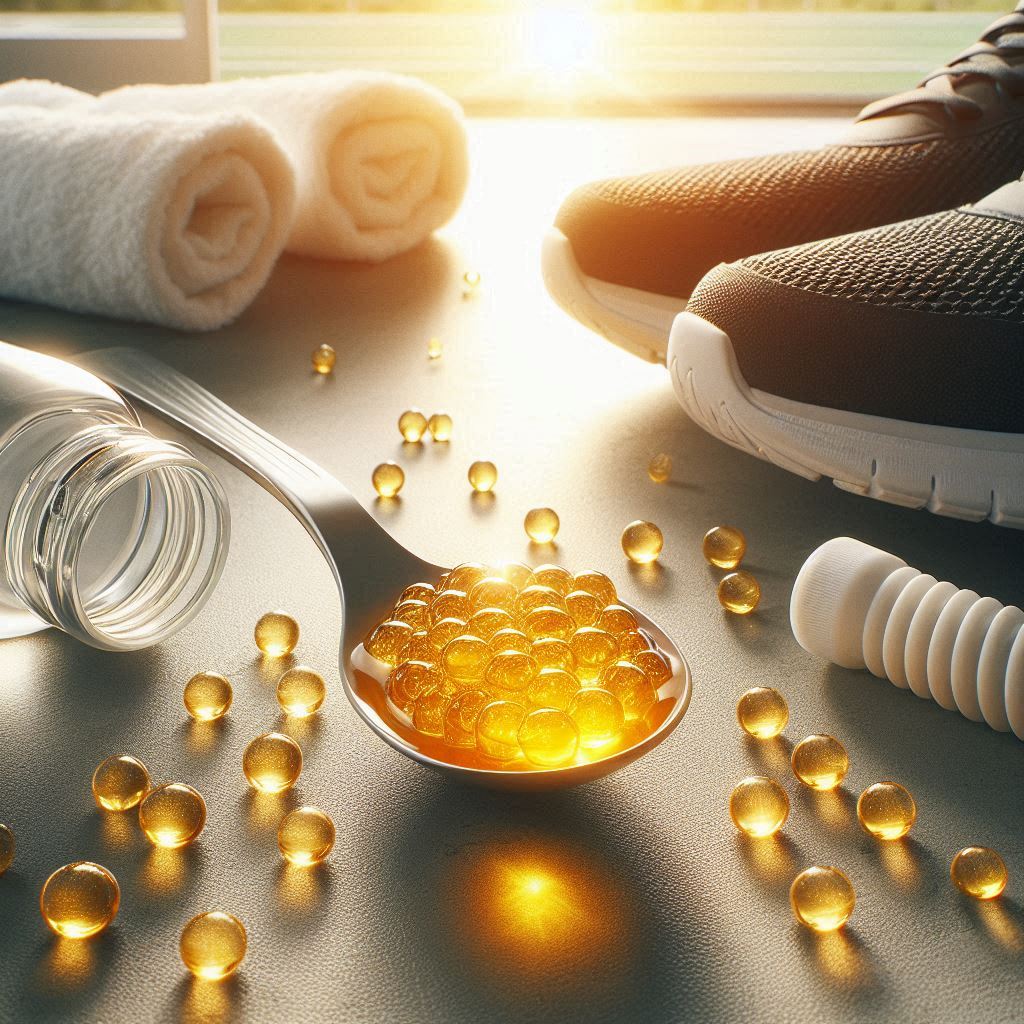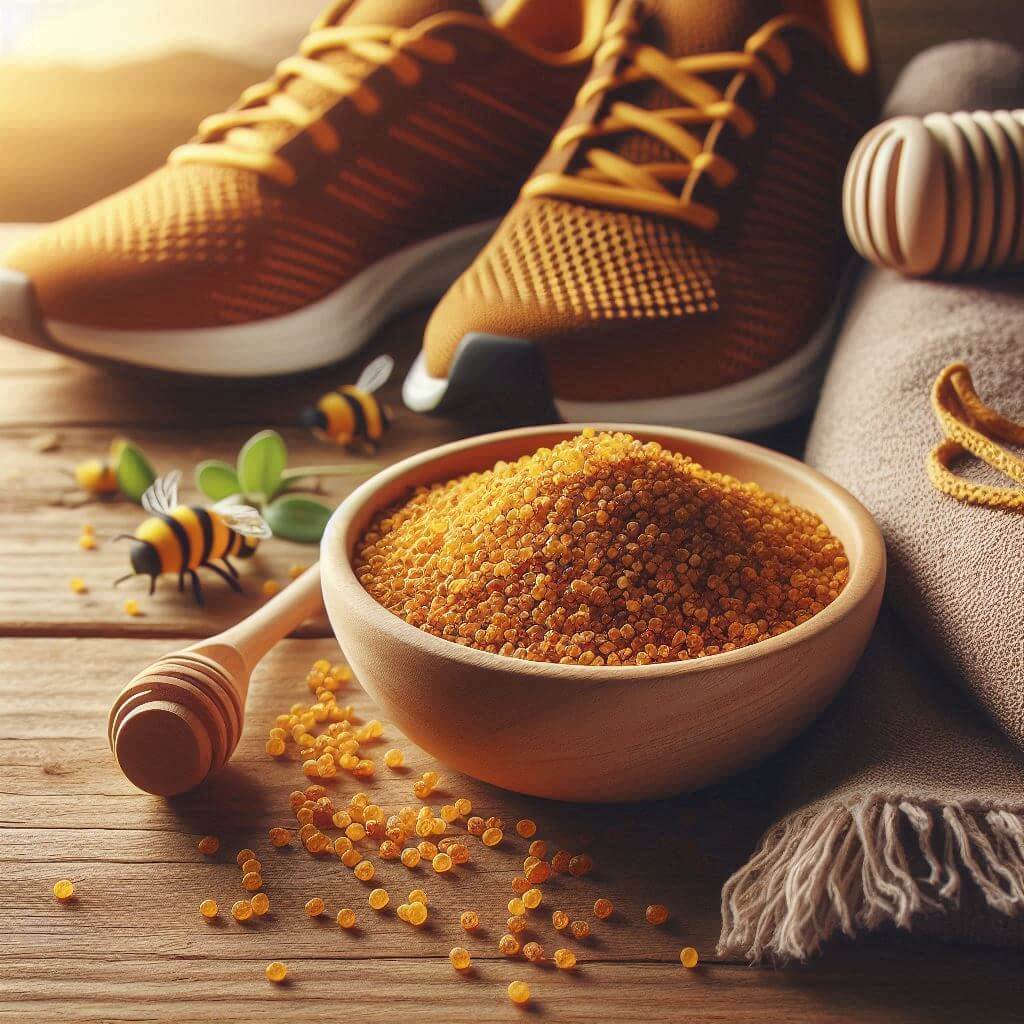Exercise Daily _ Royal Jelly Benefits for Athletes: Mitochondria, Recovery, and Real-World Performance
From ancient “queen’s food” to modern sports nutrition, here’s the evidence-based case for adding royal jelly to an athlete’s recovery and longevity stack.
Why Talk About Royal Jelly Now?
Short answer: Athletes are chasing performance, recovery, and longevity. The conversation has shifted from quick stimulants to mitochondrial health, oxidative stress control, and sustainable energy systems. Royal jelly—yes, the substance that turns a bee larva into a long-lived queen—sits right at that intersection.
Unlike single-compound boosters, royal jelly is a food matrix rich in proteins (MRJPs), peptides (e.g., jelleines), fatty acids (like 10-HDA), vitamins, minerals, and phenolics. That diversity matters: sports performance and recovery are multi-pathway problems, and athletes benefit when nutrition supports several levers at once—mitochondria, antioxidant defenses, inflammation control, and immune balance.
What Exactly Is Royal Jelly?
Royal jelly is a nutrient-dense secretion produced by worker bees (Apis mellifera). All bee larvae eat it briefly, but the few destined to become queens are fed royal jelly continuously—an epigenetic trigger that unlocks radical differences in size, fertility, and lifespan. In plain language: the diet transforms the destiny.
- Major Royal Jelly Proteins (MRJPs): Structural and bioactive proteins linked to immune and cellular signaling effects.
- 10-HDA (10-hydroxy-2-decenoic acid): A fatty acid unique to royal jelly, frequently cited in research on anti-inflammatory and antioxidant activity.
- Antioxidants & phenolics: Help neutralize reactive oxygen species (ROS), reducing stress on mitochondria during hard training.
- Micros & amino acids: Vitamins, minerals, and building blocks to support energy metabolism and tissue repair.
History & Cultures: Why Civilizations Reserved It for Royalty
Across traditions, bee products were signs of vitality and longevity. Ancient Egyptians prized bee-derived tonics; classical sources mention apian remedies; East Asian apitherapy regards royal jelly as a restorative for fatigue and resilience. While stories don’t equal science, centuries of cross-cultural use point to a consistent intuition: this stuff does something.
Our Argument: Royal Jelly Belongs in the Athletic Conversation
- Mitochondria matter. They’re not just “power plants”; they regulate ROS, cell signaling, and metabolic flexibility. Training blocks that push volume and intensity elevate oxidative stress; supporting mitochondrial resilience is table stakes for performance and longevity.
- Royal jelly supports multi-pathway recovery. Antioxidants help limit ROS, bioactive lipids modulate inflammation, and proteins/peptides assist immune balance—together nudging recovery windows shorter and quality higher.
- Food-first, low-dose strategy. Compared to exotic synthetics, royal jelly can fit a low-cost, low-risk, community-friendly plan—especially important for teams, interns, and youth programs where safety and budget rule.
- Stack synergy. Pairing royal jelly with proven basics (sleep, protein, creatine, magnesium) and mitochondrial allies (e.g., CoQ10) may amplify effects without leaning on stimulants.
Mitochondria, Oxidative Stress & Royal Jelly
Hard training increases ROS generation in working muscle. ROS aren’t “bad” by default—they’re signaling molecules—but excess ROS damages mitochondrial lipids and enzymes, slowing ATP production. Royal jelly’s phenolics and peptides help buffer that spike, while 10-HDA is frequently studied for anti-inflammatory and antioxidant actions. Some human and animal studies suggest royal jelly can influence markers tied to mitochondrial biogenesis (e.g., PGC-1α) and antioxidant enzyme activity (e.g., SOD, catalase). The big picture: less oxidative drag, better energy throughput, and potentially faster bounce-back between sessions.
How an Athlete Might Use It (Practical & Realistic)
Format: Fresh (refrigerated), freeze-dried capsules, or blends. If you’re chasing consistency, capsules are easiest for teams and travel.
Dose: Common regimens land around 300–500 mg/day (freeze-dried equivalent), sometimes split morning/evening. For synergy, some athletes pair royal jelly with 30–60 mg CoQ10. Run 4–8 weeks, then deload to assess effect.
Monitoring: Track time-to-exhaustion sessions, RPE at matched workloads, HRV, sleep quality, DOMS, and simply—how quickly you want to train hard again.
Safety: Allergies to bee products are real. Screen carefully. Start low, stop if you notice hives, wheeze, swelling, or GI upset. Pregnant or medically complex athletes should consult clinicians.

Royal Jelly vs. Trendy Boosters (NAD+, Ketones, Etc.)
We’re not anti-science or anti-supplement. We’re pro-fit. Ketone esters, NAD+ precursors, and amino stacks each have contexts where they shine. Our point: royal jelly belongs in the same strategic conversation because it addresses recovery and mitochondrial health in a food-first way. For budget-constrained programs, royal jelly can be an accessible lever—especially paired with sleep discipline, protein sufficiency, and smart periodization.
How It Compares to Bee Pollen (and Why You Might Use Both)
Bee pollen and royal jelly are siblings, not substitutes. Pollen brings diverse micronutrients and flavonoids; royal jelly contributes MRJPs and 10-HDA. For athletes concerned with mitochondrial support and oxidative control, a rotation or light stack can make sense. We’ve covered the mitochondria story for pollen here:
Bee Pollen & Mitochondria: Why Athletes Care.
Quality & Sourcing: What “Good” Looks Like
- Cold chain: Fresh royal jelly should be refrigerated; freeze-dried products should note processing and 10-HDA content.
- Transparency: Look for batch testing, contaminant screens, and verified species (Apis mellifera).
- Minimal fillers: If you choose capsules, aim for clean formulas with clear mg amounts per serving.

Who Stands to Benefit Most?
- Endurance athletes stacking volume and flirting with overreaching.
- Masters athletes balancing training with age-related oxidative stress and recovery needs.
- High-intensity field/court sports with repeated sprints and limited recovery windows.
- Busy students/interns training around work and life loads—where food-first support matters.
Counterpoints & Caution (No Hype Zone)
- Human data are promising but not definitive. Many trials are small or short; effects on muscle damage and body composition are mixed.
- Not a magic pill. If sleep, protein, and training quality are off, royal jelly won’t save the cycle.
- Allergy risk exists. Anyone with bee or pollen sensitivity should avoid or consult a clinician first.
How to Start in One Week (Simple Pilot)
- Day 1–2: Tolerance check at 100–150 mg/day (freeze-dried equivalent).
- Day 3–7: Move to 300–500 mg/day. Keep training normal; log RPE, DOMS, HRV, and session quality.
- Week 2–4: Optional add-on: CoQ10 (30–60 mg/day). Re-test time-to-exhaustion or a repeatable interval set at matched watts/pace to look for subjective & objective change.
- After Week 4: Deload for 7–10 days to see whether the perceived benefits persist or fade.
FAQs
Can I take royal jelly with creatine or caffeine? Yes. Creatine works via phosphocreatine stores; caffeine is a CNS stimulant. Royal jelly is a recovery/mitochondria support. Different lanes, generally compatible.
Is fresh better than capsules? Fresh is great if you can source and refrigerate reliably. Freeze-dried capsules offer consistency, shelf stability, and team-friendly dosing.
When should I take it? Morning with food works for most. If stacking with CoQ10, keep them at the same meal.
Bottom Line
Royal jelly is a credible, food-first tool for athletes who prioritize mitochondrial health and recovery. It’s not flashy—but paired with disciplined training and sleep, it can make your engine run cleaner under load. For programs like ours that train interns and community athletes, it’s a practical, low-cost intervention worth piloting.
Eat daily, sleep daily, exercise daily.
Selected References & Further Reading
- Comprehensive overview of royal jelly composition and bioactivity (review): NIH/PMC search: “royal jelly review”
- Mitochondria, oxidative stress, and antioxidants in exercise: PubMed search
- Royal jelly peptides & 10-HDA—bioactive mechanisms: PubMed search
- Human/athlete studies on royal jelly & performance markers: PubMed search
- Historical/ethnographic context for apitherapy traditions: Apitherapy (overview)
Note: We link to authoritative search collections (NIH/PMC, PubMed) to avoid outdated or paywalled single studies. Click through for the newest systematic reviews and randomized trials in your language/region.




